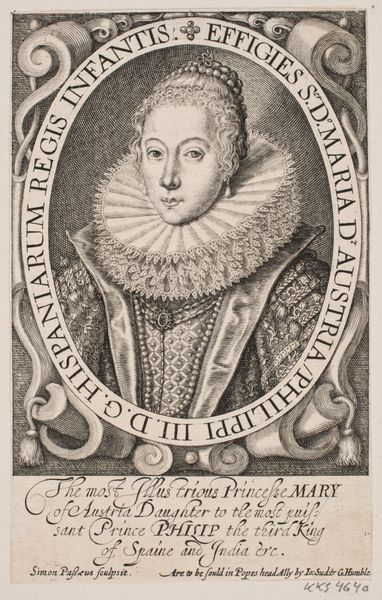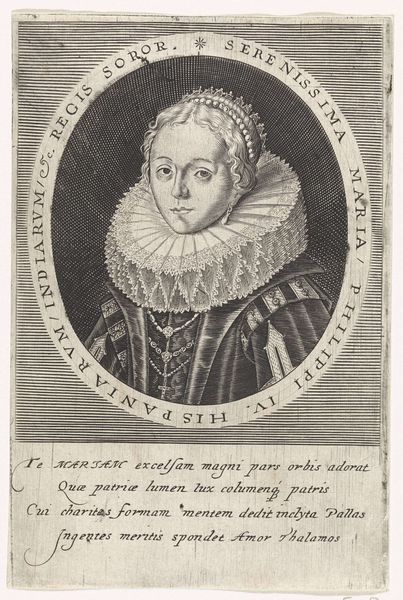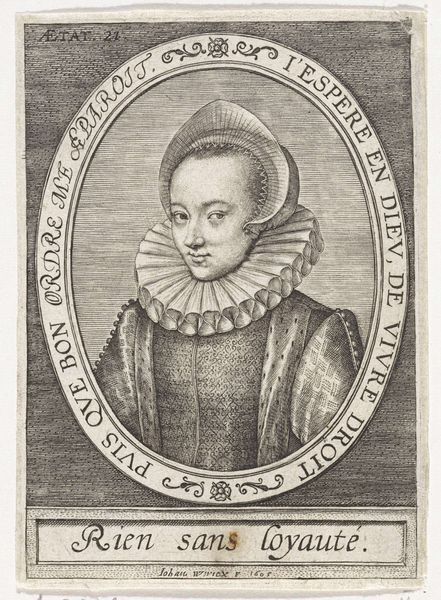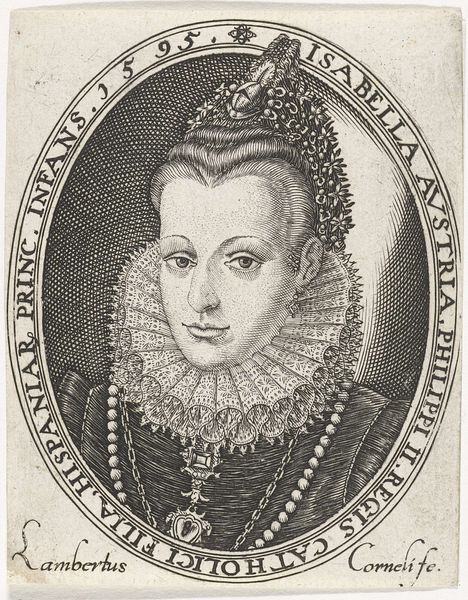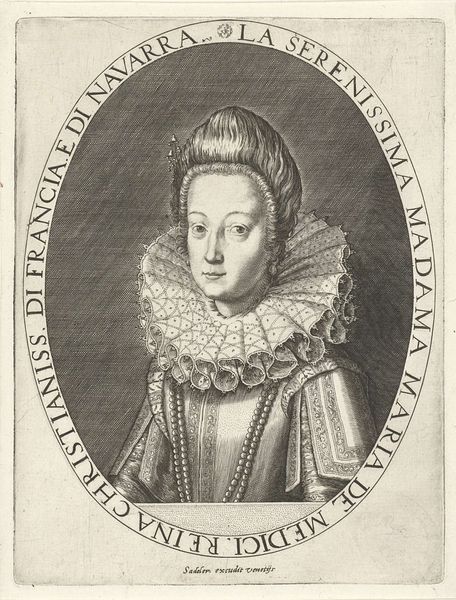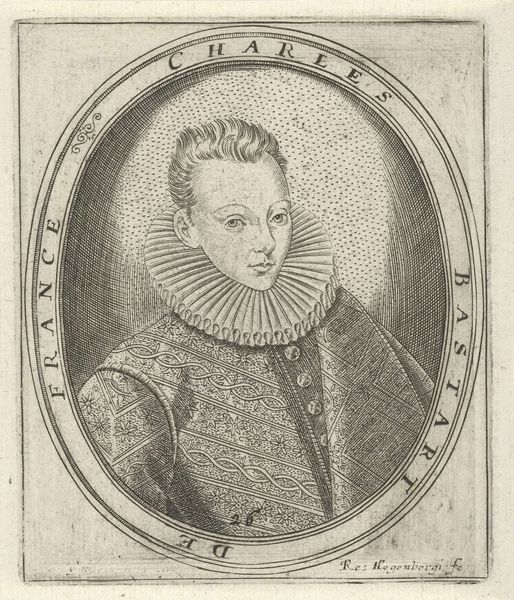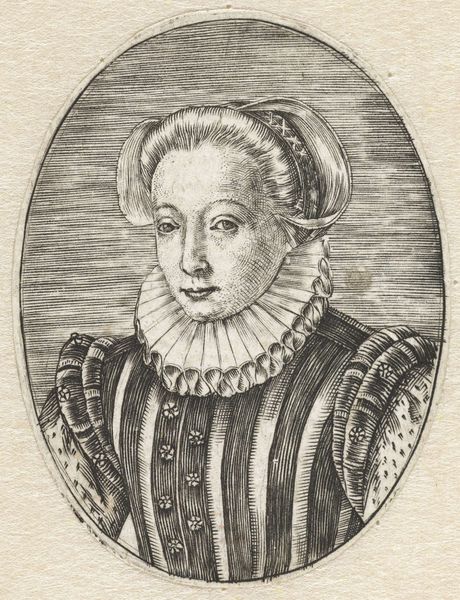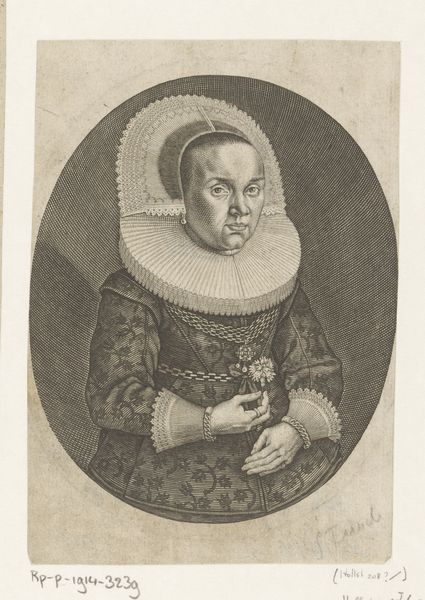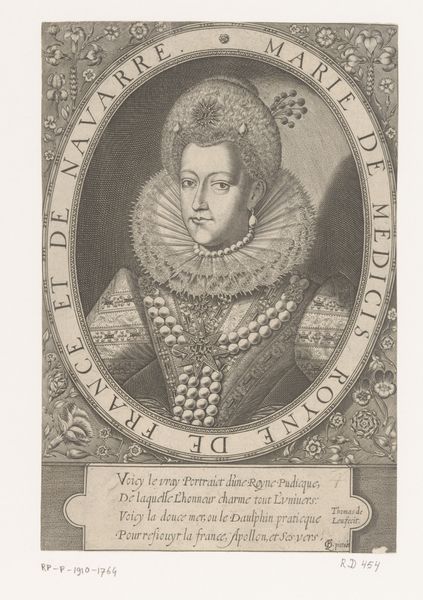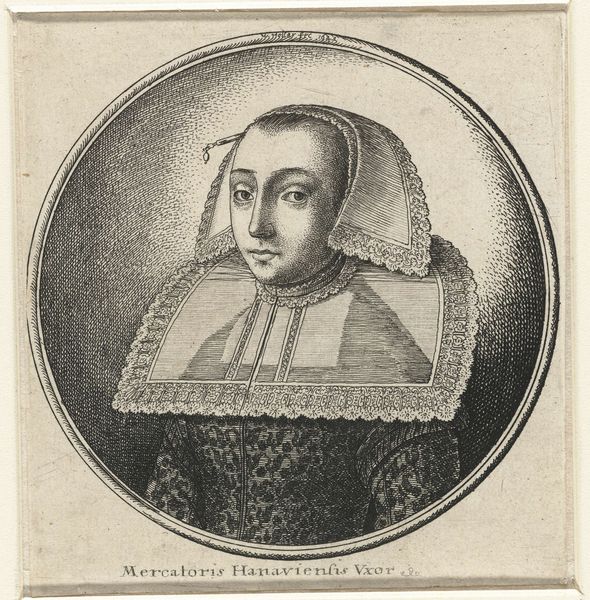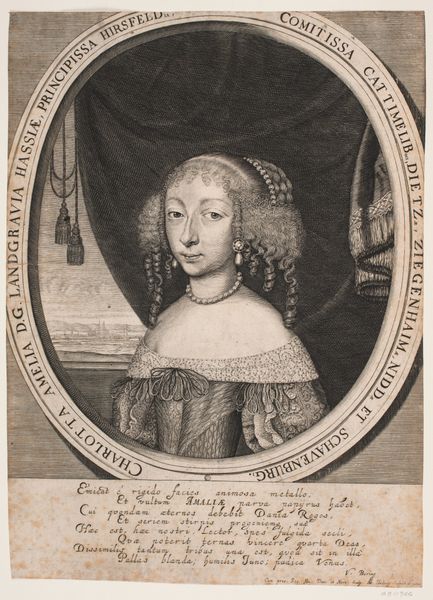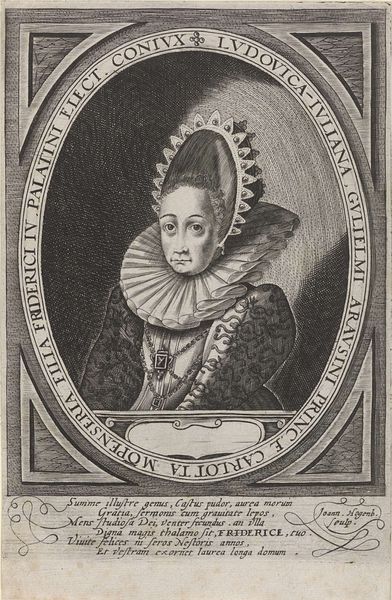
print, engraving
#
portrait
#
baroque
# print
#
portrait reference
#
northern-renaissance
#
engraving
Dimensions: height 202 mm, width 141 mm
Copyright: Rijks Museum: Open Domain
Editor: We’re looking at "Portret van Constantina de Haene," an engraving by Crispijn van den Queborn, dating from around 1621 to 1652. The detail is striking, but the subject’s expression seems a little… distant? How do you read this image? Curator: As a historian, I see more than just a portrait. The print functions as a social document. Engravings like these circulated widely, reinforcing social hierarchies. The sitter’s elaborate clothing, that remarkable ruff, and even the text below indicating her father’s military status are all declarations of social standing. It was commissioned by her brother as a commemorative piece. Think about how power and identity were constructed and communicated in 17th-century Dutch society through visual media like this. What do you think about the role of these types of engravings within a household or community at the time? Editor: So, it's not just about memorializing Constantina, but broadcasting her family's importance? Curator: Precisely. And note the date – 1621, in the midst of the Eighty Years’ War. The details about her father being a captain and commander carry extra weight during a time of conflict and nation-building. Editor: That puts the image in a completely new light! It becomes almost propagandistic in a way. Curator: Well, "propaganda" might be a strong word. It's about consolidating a family image and affirming their position within a volatile socio-political landscape. These images played a significant public role within the family and broader society. Editor: I see. So it's less about individual expression, and more about conforming to social expectations and displaying a family’s values. Curator: Exactly. And even the seemingly simple act of commissioning this print speaks volumes about the cultural value placed on remembrance and legacy. Editor: I guess I hadn’t really considered the politics of portraiture before. It really makes you think about who has the power to create and control these images, and what they’re trying to say. Thanks for sharing that different angle on it. Curator: It’s all about understanding the social forces at play and the art's public role! It offers us insights into values of Dutch society at the time.
Comments
No comments
Be the first to comment and join the conversation on the ultimate creative platform.
